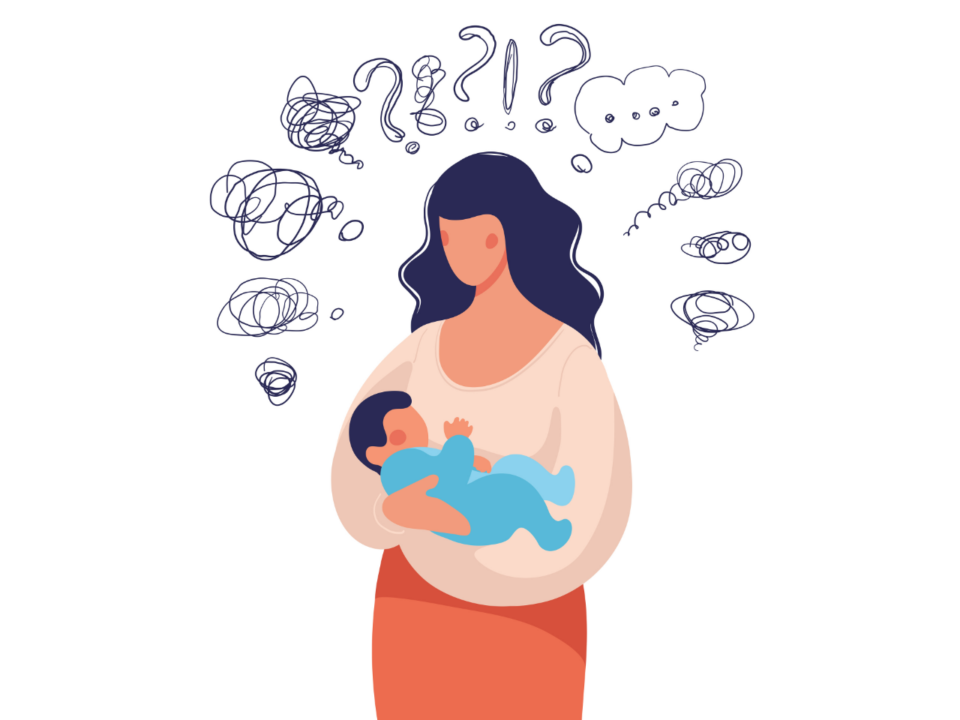Yes, there’s one more trimester that’s not often talked about. It’s the first three months of a baby’s life and the first three months of a mother’s recovery after pregnancy and birth.
Life as a new mom can be many things: exciting, stressful, and overwhelming. In those first few months as you try to settle into an “eat, play, sleep” routine with your newborn, how you are recovering as a mom can be an afterthought. There are many symptoms you may experience that you’re either too tired or embarrassed to discuss. What’s normal? Not just for your baby, but for yourself?
During pregnancy, a woman’s pelvis goes through a lot of changes: ligaments soften, muscles stretch, and posture changes. The act of childbirth can mean surgery or perineal tearing, adding another layer of physical changes. Complications can unexpectedly lead to pelvic floor problems that often go unaddressed, like urinary leakage, painful intercourse, or back pain.
Returning to Routines
“When can I return to exercise and sex?” This is one of the most common questions asked by new moms. Most medical providers will okay the return to pre-pregnancy exercise and activity at the six-week mark. But that doesn’t mean you should.
One in five women can experience pain with sex at some point in their lifetime. Physical pain can be due to infection, hormonal imbalance, nerve entrapment, scar tissue, or tense pelvic floor muscles. If postpartum sex is painful, it’s best to seek treatment with a pelvic floor physical therapist who can address issues and create a tailored plan to guide you to pain-free sex.
The same goes for exercise. If you experience any pain or urinary leakage, you’ll want to scale back, modify your exercise, and work with a specialist to rehab your pelvic floor muscles. Urinary leakage is common, but not normal, and a sign your muscles need some help.
Diastasis Recti or Abdominal Separation
Another common ailment is the separation of the large abdominal muscles, “rectus abdominis” (aka “six-pack abs”), that run from the sternum to the pubic bone. The separation can occur anywhere along the midline tissue linea alba that can soften and stretch due to hormonal changes and increased abdominal pressure from the developing fetus. They also become prone to injury.
Check in with a pelvic health physical therapist if you experience diastasis recti or abdominal wall coning or doming. You will learn how to use a slow controlled exhale with lifting to reduce pressure in your abdomen, modify activities that cause doming, and return to your activities without worsening the separation.
Perineal Tear Pain
Perineal tearing during vaginal birth is common. While most tearing heals on its own, the body can over heal and develop excess granulation tissue. Unlike healthy vaginal tissue, this is often fibrotic and can cause local pain, inflammation, and bleeding.
This can be difficult to diagnose, as perineal tissue is commonly very tender during the postpartum recovery phase. If the tissue continues to feel raw, appear inflamed, and there is prolonged bleeding, see your medical provider.
Mental Health
The fourth trimester can hit hard and mental health can suffer greatly. Postpartum anxiety and depression is very common and should be addressed quickly. These feelings may also occur months after you’ve given birth or stopped breastfeeding or lactating. Treatment forms include therapy, medication, support groups, or a combination.
The fourth trimester is a time of recovery and mixed emotions as you welcome your new baby. Check in on yourself or your fellow mom-friend; support is available for physical and mental healing. Knowing what to expect and having resources can help that wonderful time be a little bit more special.

